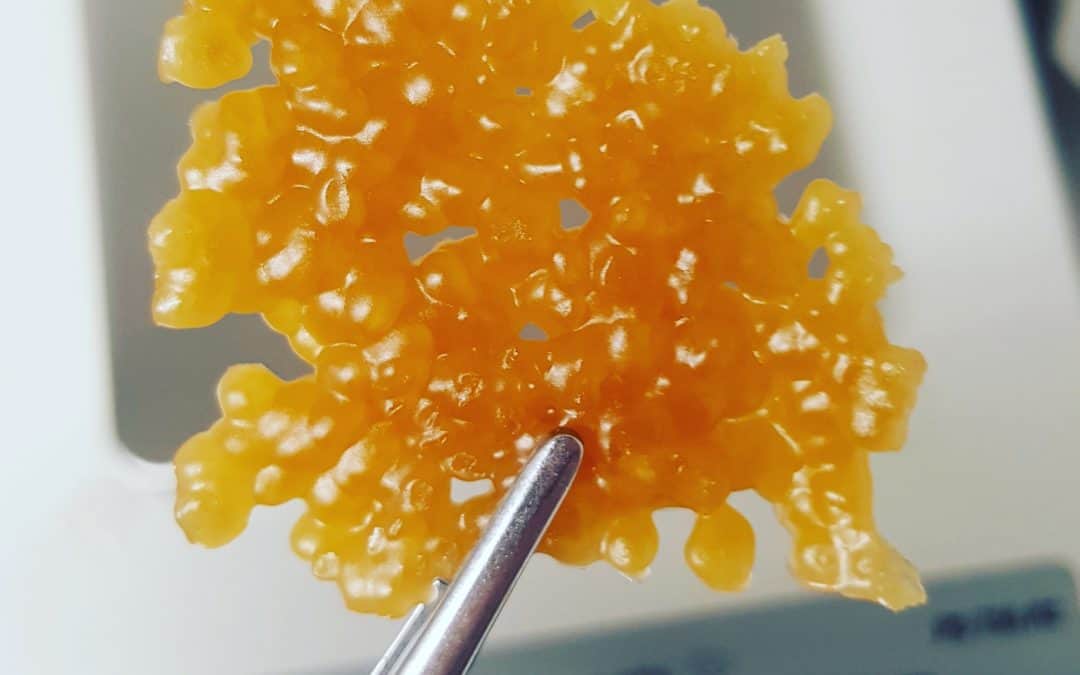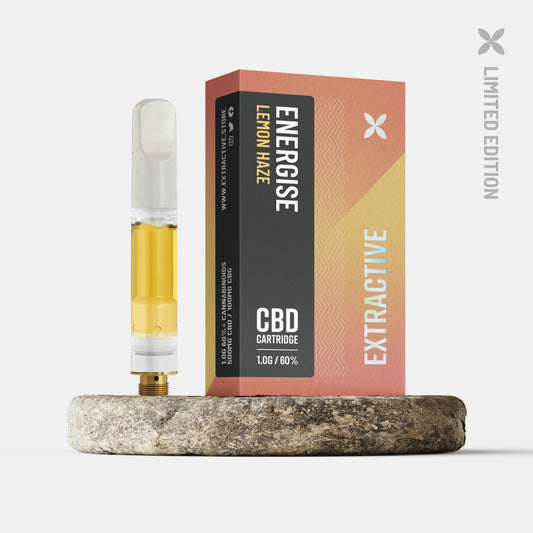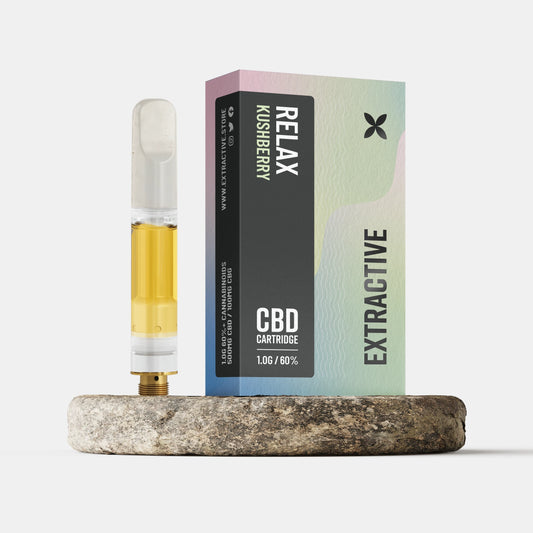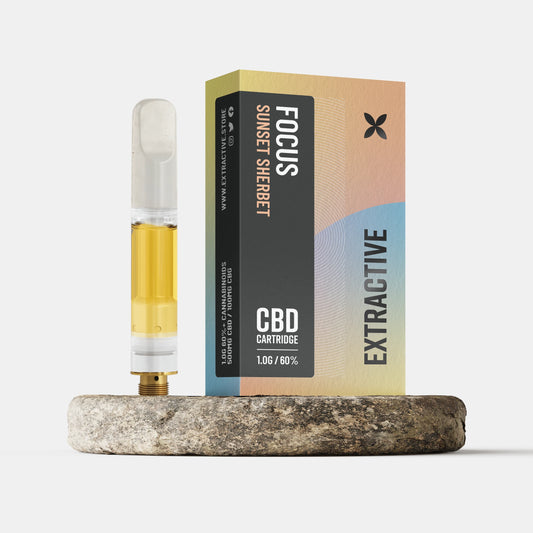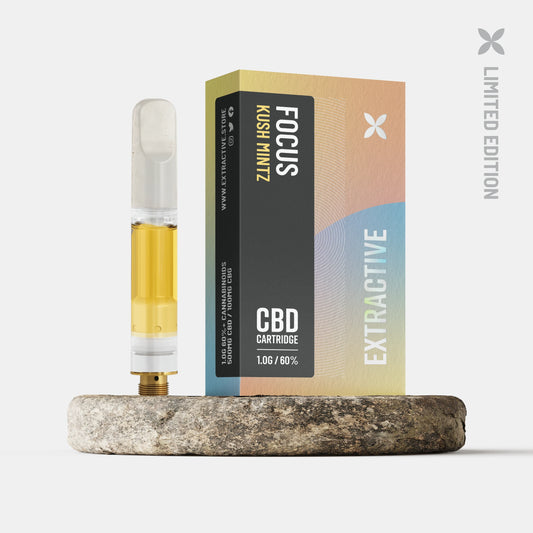The first time I saw someone inhaling a dab of cannabis oil I thought it looked like they were consuming a more illicit substance. The process involved a blowtorch, a glass or titanium piece, and a thick, super sticky oily substance known as a “concentrate”. The concentrate immediately turned to clean milky white vapour upon meeting the heated glass and, as the water bubbled away, I inhaled a surprisingly clean hit with a herbal and super tasty piney aroma. It tasted like that beautiful smell you inhale when you open a fresh package of premium quality Hemp flowers, a smell that is often compromised during smoking because of the butane in your lighter and the combustion of the plant material.
I really didn’t fully understand what a dab was at the time, but I instantly knew it would replace vaping or smoking for me, as it just felt so healthy and clean, and probably the most flavourful method I’d come across. That was a couple years ago now, just before I started this legal CBD business. Since then, dabs have gotten only more popular, both in U.S states where it’s legal, like Washington and Colorado, and in the parts of the country that haven’t come around the corner yet. Illegal THC Dabs are being demonised as a dangerously powerful drug in those countries where THC cannabis is still illegal, while many smokers in legal states just scoff at dabbing as a stupid way to get higher than you need to, akin to chugging a beer, but the truth is dabbing is one of the cleanest and effective ways of delivering cannabinoids to the body.
Dabs are actually more interesting than they get credit for. Most evidence points to them being far healthier than the standard way of inhaling cannabinoids. There is no combustion of the plant material, no need for carriers like propylene glycol(PG) and vegetable glycerin(VG). The effects are quicker and cleaner than conventional smoking methods, and the bioavailability much higher than orally administered legal CBD cannabis concentrates (the substance that makes dabbing possible) Dabs promise more innovation than any other sector of the legal industry. And with the introduction of terpenes, it sure is a pleasurable way to enjoy CBD.
The Hardware
The traditional dab rig setup includes a water pipe with a nail, which are usually made from quartz glass or surgical grade titanium. You’ll also need a metal utensil to collect your concentrate and place it on that heated nail. The traditional setup requires a blowtorch to heat up the nail, but there are some very high-quality battery-powered devices now, which are known as E-nails (electric nails). As well as some small portable Dab pens.
To start off, you can buy an electronic nail, which plugs into your wall and heats itself to a specified temperature. These can be pricey, starting around £100 and getting more expensive if you want more control over the temperature. But it’s the easiest introduction into dabbing you can get.
“E-nail kits are a good investment. I have one at home, and you can really dial it down,” “You can do a low-temp dab on the e-nail to preserve more of the aroma compounds(known as terpenes) giving more flavoursome vapours which coat your taste buds. The other option is to buy a dab pen. They are similar to e-cigarettes or vape pens but have been modified to take single hits of CBD concentrates. Dab pens will run you £30 to £100 and will replicate most aspects of the traditional dab rig while also being portable and far more discreet.
So now that you have your dab setup, what are you going to put into it? That’s where things get a little bit more complicated.
What to look out for in a dabbing concentrate.
Not all co2 extracts on the current market are equal. Most aren’t suitable for dabbing as they contain an excess of naturally occurring plant waxes/lipids/oils which are picked up during the high-pressure CO2 extraction. We covered this here (link) in a previous article. Basically anything under 80% CBD will contain lots of polyunsaturated fatty acids which you don’t really want to inhale. If an extract was 50% CBD the other 50% will contain a bunch of waxes.
“What strain was used for this concentrate?”
The only way to produce a top-shelf concentrate is to start with good hemp material. It doesn’t need to be a picturesque flower—it’s all going to be ground up and shot into a pressurized machine—but the starting material will determine a lot of the final product.
“What solvent was used on this concentrate?”
Almost all concentrates use some kind of solvent to separate the cannabinoids and terpenes from the rest of the hemp plant material. The classic example is butter—heat crushed up hemp in butter, strain out the plant material, and you have CBD-laced butter ready to be baked or spread on anything. Butter is effective for the home concentrate maker, but the chemists working on modern concentrates opt for more efficient solvents like butane, propane, ethyl alcohol, or carbon dioxide.
Rosin is one of the solvent-free concentrates available on the market. It is made by heating and squeezing the resinous sap out of flower buds. This solvent-free process eliminates any need for more refining (see below). Don’t confuse rosin with “live resin” or “loud resin,” which do use solvents (see about that naming thing?).
“Was this concentrate refined or distilled?”
Extraction is usually the first of multiple steps when creating concentrates. If a petroleum-based solvent was used, like butane or propane, the lab will need to further refine that solvent out of the concentrate. Further refining or distilling of the concentrate will also increase its strength and certain flavour profiles.
When you look at the difference between your bottom shelf and your single malt whiskey alcohol, it’s the preparation that went into it. So when you’re looking at your distilled concentrates, they’re taking more time for the experience of the smoothness of your concentrate vapour. It’s something we have been perfecting here at Highkind Cannabis Co®.
Don’t take too much
There’s some irony in dabbing—it’s a clinical way to administer good doses of CBD extremely quickly, but most of the people who dab regularly do so moderately. It’s common to see people taking small dabs, say 0.05g (50mg)or about the size of a hemp seed. If you’re using a 70% CBD concentrate, you’re getting 35 milligrams of CBD per 0.05 (50mg) gram hit, or about three average dosed CBD capsules. Frequent dabbers will likely microdose, multiple dabs of this size, so they could ultimately be ingesting more than 100 milligrams of CBD per day.
If you are trying dabbing for the first time, you should certainly use restraint. A smaller dab will let you enjoy the smoothness and flavours. A lot of dabs that people get the first time are too big, so start small.
But once you have a feel for dabs, I’d recommend finding a time when you have absolutely nothing you need to do and nowhere to go. Sit down on the couch and inhale a good-size dab of top-shelf terpene infused concentrate—and you’ll be as relaxed as you have ever been.
Check out our great range of CBD Concentrates to get started.
